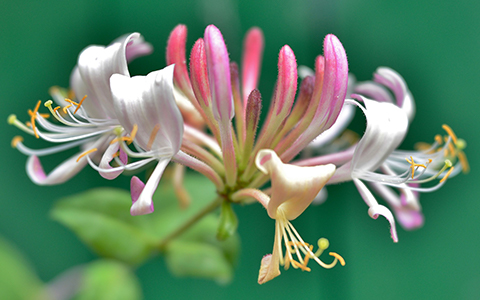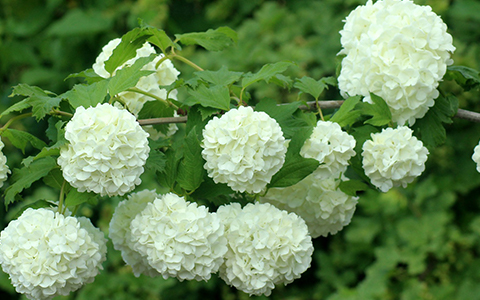
Avoid a barren and boring yard . Knowing which shrubs give off a delightful fragrance will help you plant a yard full of aromatic surprises.
72tree.com gathered the following list of fragrant shrubs to help you balance beauty with aroma when planting in your yard and garden.
1. Jasmine (Jasminum)

Jasmine is a large deciduous or evergreen vining shrub with a graceful look and an appealing sweet scent.
Sun Requirement – Jasmines need 6 or more hours of daily sun. For species requiring partial shade, they will require 2 to 4 hours of daily sun.
Soil Requirement – Jasmine shrubs need well-drained, moist, and moderately fertile sandy, loamy soil.
Size – Jasmine typically grows to a height of 10 to 15 feet as a tall, semi-vining shrub.
Blooming Season – This species blooms in clusters from spring until mid-fall. The sweet flowers are often cream, white, pink, or yellow.
Fragrance – Jasmine has a floral scent considered rich and sweet.
Hardiness Zone – This species thrives in zone 7 and can sometimes survive in zone 6.
2. Lilac (Syringa)

Lilac is a deciduous shrub with an irregular, rounded outline. The shrub is fast-growing when young but slows considerably with age. Lilac stems are dark gray to brown, and the wood is strong. Leaves on this shrub are dark green to blue-green on top and pale green below.
Sun Requirement – Lilacs need 6 to 8 hours of daily sun. Any less, and they may not bloom.
Soil Requirement – This species grows best in slightly alkaline (6.5 to 7.0 pH), moist, well-drained soil rich in organic matter.
Size – Lilac grows to a height of 8 to15 feet and a spread of 6 to 12 feet at maturity.
Blooming Season – Lilac typically blooms for 2 weeks in mid-spring. However, some varieties bloom in early and late spring.
Fragrance – Lilac is quite different from other species. Its scent is more deeply, and richly floral, similar to rose with subtle hints of vanilla. For those who prefer stronger perfumes, Lilac is a suitable choice.
Hardiness Zone – This species thrives in zones 3 through 7.
3. Gardenia (Gardenia jasminoides)

Gardenias have glossy evergreen leaves typically arranged opposite each other. The shrub’s tubular flowers are white or yellow and bloom singly or in small clusters. This shrub produces large berry-like fruits with sticky orange pulp.
Sun Requirement – Gardenias need a minimum of four hours of daily sun.
Soil Requirement – This species grows best in acidic (5.0 to 6.0 pH), moist, well-drained soil rich in organic matter.
Size – Gardenias grow 3 to 5 feet tall and wide.
Blooming Season – This species blooms in from late spring until mid-fall. Gardenia flowers are known to last several weeks before wilting.
Fragrance – Gardenias produce significantly fragrant flowers that may change scents during the day. The aroma is often described as a spicy, zesty scent, sometimes with coconut or even peach undertones.
Hardiness Zone – Gardenias thrive in zone 6b.
4. Viburnum (Viburnum)

Viburnums are large-flowering shrubs, with some varieties reaching up to 20 feet. There are both evergreen and deciduous viburnum varieties.
Sun Requirement – Viburnums thrive in full sun but will grow as well in light to partial shade.
Soil Requirement – This species will do well in moderately fertile, moist, and well-drained soil with a 5.6 to 6.6 pH.
Size – Viburnum grows from 3 to 20 feet at maturity.
Blooming Season – Most viburnums flower in spring.
Fragrance – The flower’s scent is sweet and pervasive with clove-like notes.
Hardiness Zone – Viburnum is hardy to zones 2 through 9.
5. Honeysuckle (Lonicera)

Honeysuckle shrubs are deciduous perennials with oval leaves and clusters of tubular flowers at the branch tips.
Sun Requirement – Honeysuckles need 6 to 8 hours of daily sun. Any less, and they may not bloom as much.
Soil Requirement – This species requires organically rich and well-drained soil. It should be moist but not soggy and should be an acidic to moderately alkaline soil ranging from a 5.5 to 8.0 pH.
Size – A honeysuckle vine can reach an astounding 30 feet in height, while other varieties grow to only 10 feet. It can take 10 years for honeysuckle to reach these mature heights.
Blooming Season – Most varieties will bloom in the spring, but some continue to flower all through summer and into early fall.
Fragrance – Honeysuckle is a pungent, almost thick scent, but it’s fruity with hints of honey and citrus.
Hardiness Zone – Honeysuckle is hardy to zones 5 through 9.
Fragrant Shrubs
In this article, you discovered species and planting information about 5 fragrant shrubs to grow in and around your garden and yard.
Planting fragrant shrubs in your yard and garden adds another dimension to the pleasant experiences you are trying to create around your home.
By not planting fragrant shrubs in your yard and garden, you are squandering an opportunity to add diversity, pleasant aromas, and curb appeal to your home.
Sources:
hgic.clemson.edu/factsheet/jasmine/
plants.ces.ncsu.edu/plants/syringa-vulgaris/
ctahr.hawaii.edu/oc/freepubs/pdf/of-32.pdf
unlgardens.unl.edu/viburnums
naturalresources.extension.iastate.edu/encyclopedia/honeysuckle-invasive-species-profile